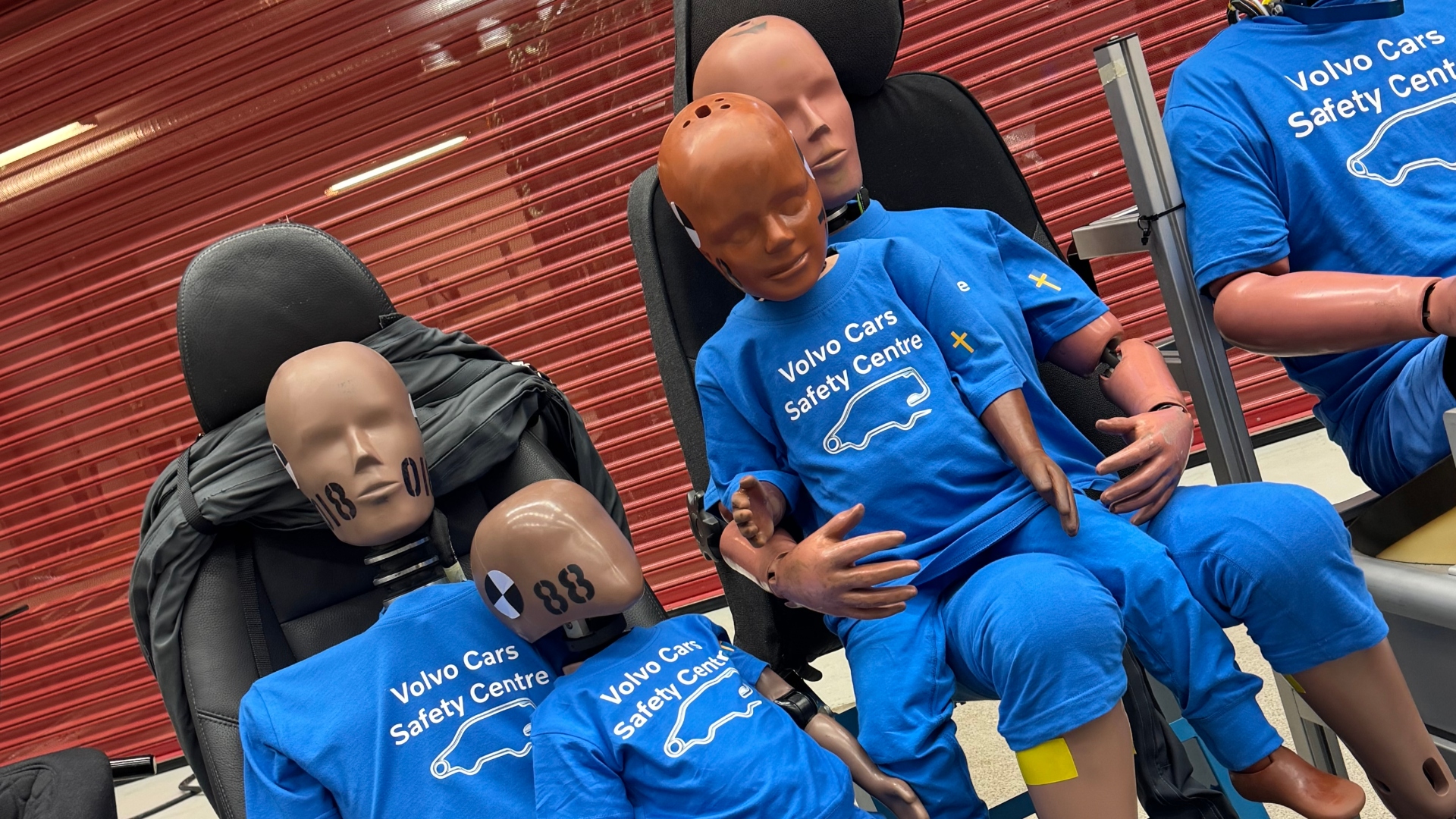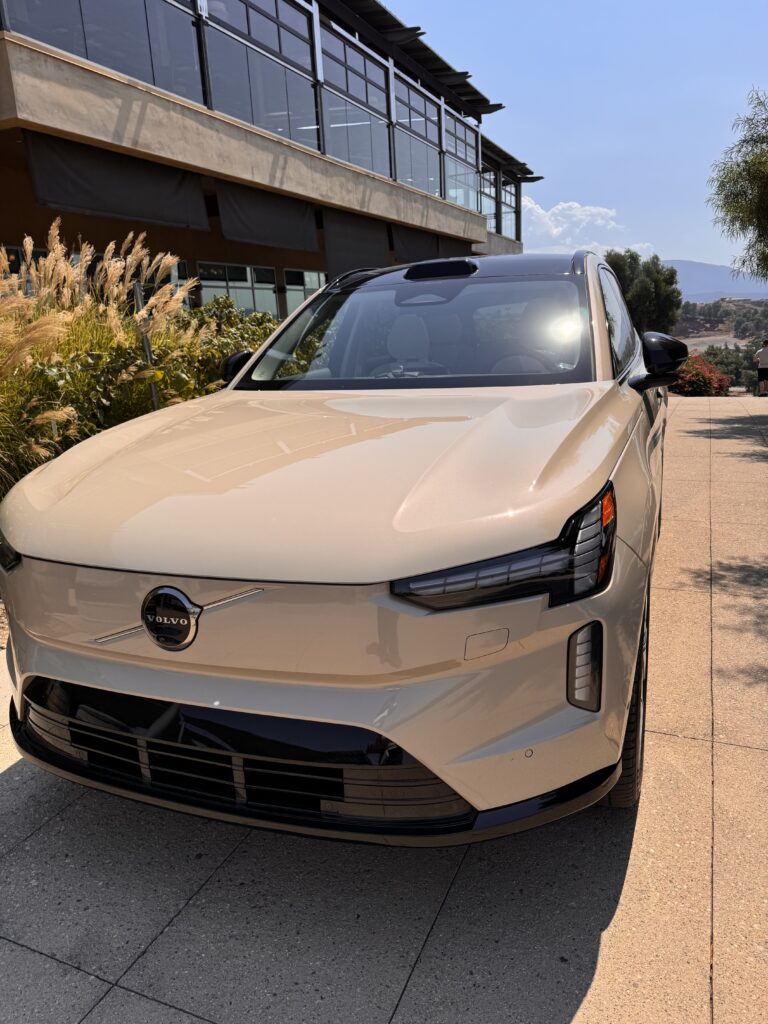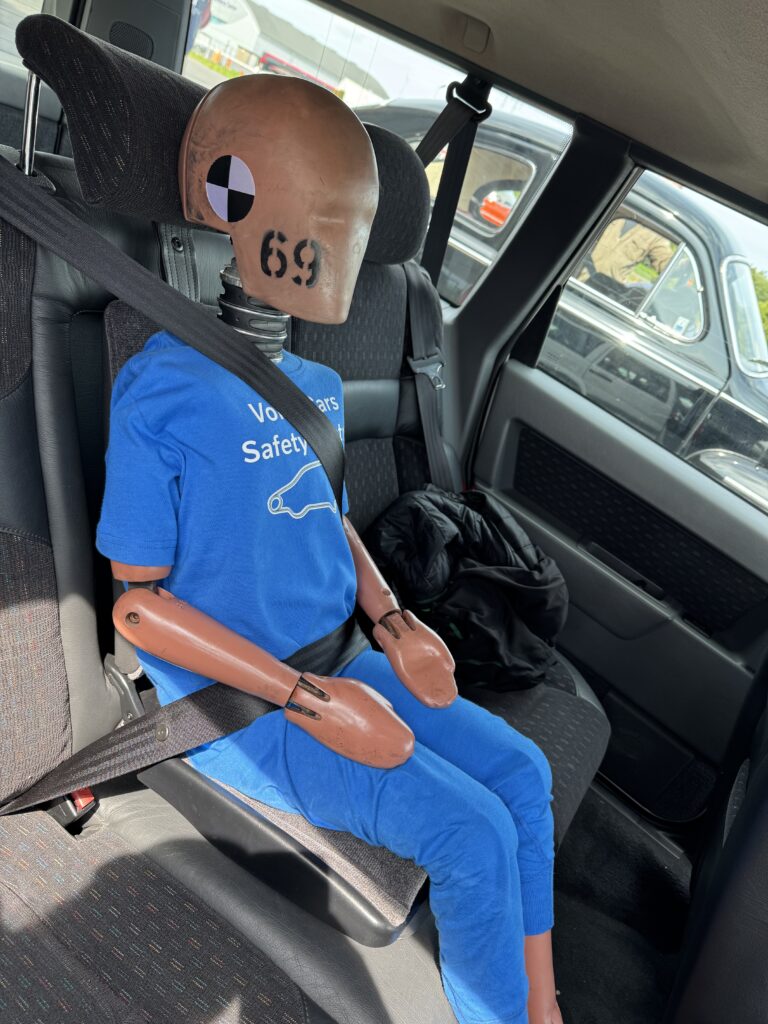
Every year, over 1,000 children age 14 and younger in the United States die in a car crash, and tens of thousands are injured. In 2022, an average of three children per day were killed in vehicle crashes, according to the National Highway Traffic Safety Administration. Needless to say, for many parents, safety is a factor when choosing a family vehicle. Whether you’re a new mom or a parent whose family’s transportation needs are growing and changing, figuring out how to keep your family safe on the road is likely a concern when you’re considering a new car purchase.
Car accidents happen, but there are things that we can do to minimize the damage. One thing we know is that cars are safer than ever — child deaths related to car crashes have declined significantly since about 1975 — that’s in large part due to child safety innovations in the car industry that were introduced nearly 60 years ago. At the forefront of those innovations has always been Swedish car manufacturer, Volvo Cars, so we sat down with the company’s leading child safety expert, Isabelle Stockman, to learn more about the most important things parents should consider when it comes to child car safety.
Volvo Cars is responsible for five world’s first child safety features including rear-facing child seats and child booster cushions. The company also debuted the modern three-point seatbelt, and will begin selling vehicles outfitted with the world’s first multi-adaptive safety belt in the upcoming 2026 Volvo EX60, which Volvo Cars says will “use data input from interior and exterior sensors to customize protection, adapting the setting based on the situation and individual’s profiles, such as their height, weight, body shape and seating position.” So yes, that means it will enhance safety for children, teens, and even pregnant women.
Needless to say, Volvo Cars is the authority when it comes to car safety, and that’s because of the effort the company puts into studying real-world scenarios.
View on Threads
Still, Stockman maintains that child safety is less about the vehicle itself and more about the commitment to research and approach to child safety of the manufacturer. Every car maker has to meet the same minimum safety standards, which of course, is why car shopping can be so confusing. When looking to purchase a new vehicle, parents who are concerned about safety should spend some time learning how the car manufacturers they’re interested in test and develop their safety features, particularly those related to children. Those parents should look for vehicles that actually go above and beyond the standard.
Parents should look for vehicles equipped with:
• Automatic emergency braking
• Blind-spot information systems
• Cross-traffic alerts
• Adaptive cruise control
• Lane-keeping assist
• Rear collision mitigation support
• 360-degree cameras
• Road sign information systems
• Slippery road alerts
• Backseat passenger alerts
• Impaired driver alerts
Currently, the Volvo XC90 is ranked as the safest SUV available in the US, and offers all of these features, alongside vehicles like the Tesla Model S and the Toyota RAV4, according to Nexus Auto Transport. But, perhaps even more important than the exact vehicle you choose for your family, is educating yourself on how to properly transport your most precious cargo.

From that first harrowing ride home from the hospital with a newborn to the long afternoons of carpooling and shuttling kids to extracurricular activities, moms and dads spend a lot of time driving from Point A to Point Z, and everywhere in between. We’re often in a rush, with our hands full, and trying to keep a toddler or distracted tween from darting into traffic. We make mistakes. Everyone does. But, a lot of it actually comes down to being well-informed in the first place.
Stockman shared that misuse of child safety features and products is actually one of the most significant factors when it comes to risk of death or injury in a car crash. “I think it’s quite interesting because there is a paper from the ’60s that is summarizing like the anatomy of kids and why kids are different to adults and why they have specific protection needs,” she says. “The reason for doing what we do is based on on the human body. It’s like this human-centric approach.”
Remaining rear-facing is more important than many people think
The data collected about the human body and the anatomy of a child unequivocally states that remaining rear-facing as long as possible is the best choice. However, in the US, it’s uncommon for children to remain rear-facing past the age of 2 or even in a car seat at all beyond the toddler and preschool years. “Being rear-facing, you distribute the loads over a larger area,” Stockman explains. Throughout Europe it’s most common — and in many places, legally mandated — for children to remain in a rear-facing car sear through age 4. Once your child has reached the upper limits of their car seat for rear-facing, you should turn them forward facing, but only once they’ve reached those limits. Not because they don’t like looking at the back seat or because they have to bend their knees, or any other reason beyond them being the appropriate and safe size to turn forward.
Transitioning to a booster seat rather than no safety seat at all is crucial
Once your child has reached the maximum limit for height and weight for their forward-facing car seat, you should always switch to a booster seat. Children aged 4, 5, and 6, and even older children, should really never be in a car without a safety seat. Each state in the US has specific regulations and recommendations for when a child can no longer use a booster seat, so if you think your child is ready to not use one, always check those recommendations first. Stockman recommends that children remain in booster seats until they reach a height of 135 to 140 centimeters (53 to 55 inches).
“In order to stop using boosters and be directly on the seat, you need to be tall enough so you can sit all the way back,” she says. “Because the protection principles are the same as for adults.”
“You need to bend your knees around the front part of the the cushion, and you should have the belt on the part of the body where the body is strongest,” she explains. “So like the hips and the sternum, the chest bone and the clavicle. And when you can do that without [slipping out],” she says. “Then it’s the general recommendation of 140 cm, so like 10 years old, but then it depends on if you have a taller upper body and shorter legs, maybe you need to stay in the booster longer.”
So, there is a bit of individual variance, and parents should be mindful of that. Stockman mentioned that the hip bone isn’t really developed until kids are between the ages of 10 to 12, noting that is the part of the body that actually keeps the lap belt secure on the body. With younger kids, it’s easier for the belt to slide up to the abdomen, risking injury to a number of internal organs.

Choose a vehicle that will grow with your family
To get the most value out of our vehicle, it’s ideal to choose a vehicle that will grow with your family, whether that means in number or the size or each child as they get older. Look for a car that can fit enough car seats in the same row for the number of children you plan to have and has room for an adult to sit comfortably next to and between car seats. You’ll avoid having to upgrade down the line and possibly sacrifice safety by taking kids out of car seats or booster seats too soon in order to make more room.
Volvo even makes some vehicles with built-in booster seats that can be tucked away when they are no longer needed, which allows for older kids to feel a little less embarrassed about still being in a booster and offers them a bit of independence when getting in and out of the car, since they can buckle themselves in without the risk of user error.
“With the integrated booster, it’s very, it’s very difficult to do something wrong. It’s already set up. Just push the belt on and then you’re good to go,” Stockman shares.
If you’re interested in a used car, integrated booster seats can also be found in older Volvo models as well as some vehicles by Dodge and Chrysler.




